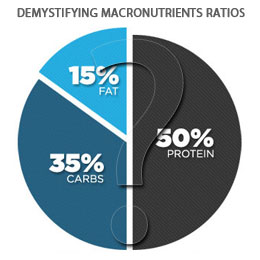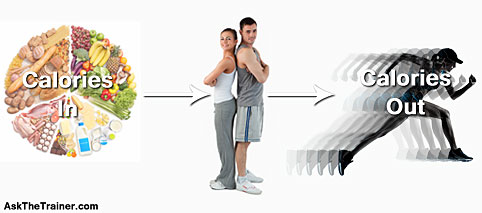- Like
- SHARE
- Digg
- Del
- Tumblr
- VKontakte
- Flattr
- Buffer
- Love This
- Save
- Odnoklassniki
- Meneame
- Blogger
- Amazon
- Yahoo Mail
- Gmail
- AOL
- Newsvine
- HackerNews
- Evernote
- MySpace
- Mail.ru
- Viadeo
- Line
- Comments
- Yummly
- SMS
- Viber
- Telegram
- JOIN
- Skype
- Facebook Messenger
- Kakao
- LiveJournal
- Yammer
- Edgar
- Fintel
- Mix
- Instapaper
- Copy Link
What are Macros?

I am assuming we have all heard the term “macros” in some sort of context regarding nutrition, but what are macros?
Macronutrients or “Macros” are nutrients needed by the body in large amounts hence the prefix macro. There are three macronutrients used by the body which are carbohydrates, fats, and proteins.
Carbohydrates are the body’s preferred source of energy. Along with providing four calories per gram, they are also stored in the liver and in the muscle as glycogen to be used by the body later. In the muscles, glycogen is the main energy source for anaerobic activities such as weight lifting.
Fat is the body’s highest energy yielding macronutrient and the body’s main source of energy storage. With nine calories per gram, fat plays a pivotal role in hormone synthesis and vitamin absorption. Along with carbohydrates, protein also yields four calories per gram.
Proteins are used to repair and synthesize new tissue such as muscle. As you now know each macronutrient has several different biochemical roles in the body, but they all share one common role which is to provide the body with energy.
One could think of a macros diet as a more precise way of counting calories. If one consumes 200 grams of carbohydrates, 150 grams of protein, and 50 grams of fat, they have consumed a total of 1950 calories. The idea of following a macro based nutrition plan is relatively simple.
Further Reading:
How to Follow a Macro Plan
 A nutrition plan based on macro nutrients also known as “if it fits your macros” or “iifym” sets a daily allotment or budget for each of the macronutrient. The concept is quite simple, but it can take time to master consistently eating close to the exact target amount of each individual macronutrient.
A nutrition plan based on macro nutrients also known as “if it fits your macros” or “iifym” sets a daily allotment or budget for each of the macronutrient. The concept is quite simple, but it can take time to master consistently eating close to the exact target amount of each individual macronutrient.
Now you are probably thinking with all the weighing and counting why would such a nutrition plan be so popular? It is the flexibility and effectiveness that counting macros gives a nutrition program that makes this style of nutrition so unique.
Given the right macronutrient intake, individuals are not only getting lean they are doing it while enjoying a variety of foods. As long as one accounts of the macronutrient intake of a specific food item, pretty much everything is on the menu such as typical diet no no’s like ice cream, pizza, and brownies. This flexibility also encourages sustainability as there are no food restrictions.
I am not here to argue about the nutritional value of foods I’m simply explaining how a macros diet works. If you frequent any kind of macro internet group, you are bound to see photos of pop tarts and other fun foods. However, I can assure you that it is near impossible to have the right macronutrient intake eating all junk food.
For those of us who love convenience there are some food services such as Macros Edge in Arizona that prepare meals and do the precision of macro counting for you. What are the right macros for you?
How to Set and Adjust Macros
 Setting your own personalized daily macronutrient intake allotment is a huge variable. Some individuals may be able to eat more total macros or energy on a weight loss diet while other individuals may need less carbs, more fats, more protein, etc. As you can see, macronutrient intake is very individualistic.
Setting your own personalized daily macronutrient intake allotment is a huge variable. Some individuals may be able to eat more total macros or energy on a weight loss diet while other individuals may need less carbs, more fats, more protein, etc. As you can see, macronutrient intake is very individualistic.
If you do not know where to start, that is ok. There are several ways one can find the right amount of macronutrients for them. First, you can use an online calculator such as iifym.com which helps you set your macros based upon your age, gender, activity, and goals. Macro calculators are an easy way to find your macros although the suggested macronutrient intake is just a rough estimate.
A more accurate way to find your own macronutrient goals would include keeping a food journal for several weeks. Keeping a food log for several weeks will allow you to accurate assess your daily energy or caloric intake which then can be tailored to your goals and broken down to individual macronutrients based upon percentages of the Dietary Reference Intakes (DRI). The DRI recommends a diet consisting of 45%-60% carbohydrate, 20%-35% fat, and 10%-35% protein. However, these macronutrient ratios are not set in stone and you may find yourself benefiting from consuming a diet outside of the DRI guidelines.
Another viable option for finding the right target amount of macronutrients for you is by hiring a nutrition coach. Finding an experience coach familiar with macros based nutrition pays dividends in more than just one way. On top of helping you find your target macros, a coach can also help you make adjustments to your macro based diet down the road.
Unfortunately, the same set of daily macros will only take you so far and they will need adjusting from time to time unless your goal is maintaining your current physique. Adjustments should be made based off progress and goals both of which go hand and hand. When progress halts for several weeks, changing your macronutrient intake can help put you back on track for your goals. Generally, if the goal is weight loss a decrease in total energy is made via the reduction of one, two, or all three of the macronutrients and vice-versa if the goal is weight gain.
How to Figure Out Your Ideal Macro Ratio
There are tons of tools online that help you dial in the best macronutrient ratios for your individual goals. A good macro calculator is going to take into account your weight, height, sex, and body fat percentage. If you don’t know your body fat percentage, I would highly recommend you get it tested by a personal trainer or nutritionist. You can also buy affordable skinfold calculators to track your progress at home. If you don’t know it right now, you can still estimate macro ratios using these online tools.
Here are links to a few cool calculators that are free to use:
- http://iifym.com/iifym-calculator/
- http://healthyeater.com/flexible-dieting-calculator
- http://macronutrientcalculator.com/
Macros: The Bottom Line
Following a macros based nutrition plan is a flexible and highly effective style of dieting. There are no food restrictions making a macros plan both flexible and sustainable and the only rule so to speak is consuming the target amount of macros. In addition, it is a more precise way of counting calories yielding better physique results than calorie counting alone.
Setting and adjusting macro intakes can be done using an online calculator, on your own with a food log, or with the help of an experienced nutritional coach. If you are tired of the conventional dieting protocols which restrict certain foods or entire macronutrients, then it is time to give a macros based nutrition plan a try.
Managing Macros for Fat Loss

If you are reading this article, then chances are you have heard about a macros based diet. If you do not know what a macro is or how macro dieting works, I suggest reading my macros for beginners section first.
When it comes to fat loss, a macros based diet has proven effective and sustainable for a great number of people. It is sustainable because it allows a dieter to have flexibility when it comes to food selection and effective in terms of fat loss as long as your target macros are below your energy or calorie requirements.
However, getting started or finding your target macros for fat loss on your own is not the easiest things to do. Therefore, I have laid out a strategy for finding your target macros for fat loss in this article.
Energy Balance
 This is the most important aspect of any diet. Even on a macros based diet, if your calorie or energy consumption is too high, then fat loss cannot happen; thus the importance of first finding your calorie needs.
This is the most important aspect of any diet. Even on a macros based diet, if your calorie or energy consumption is too high, then fat loss cannot happen; thus the importance of first finding your calorie needs.
Tracking your normal caloric intake over a several day period using an app such as Myfitnesspal can give you a true estimate of your daily caloric needs to maintain your weight, otherwise known as your baseline or metabolic rate.
You will need to eat less than your baseline to lose fat. Generally, most people can achieve weight loss eating approximately 10-15 times their weight in calories.
For example, an individual weighing 180lbs can lose weight eating anywhere from 1800-2700 calories depending on their individual metabolism and their activity level. However, this is not an end all be all number and some may need less or more calories.
In addition, as you lose weight, the number of calories required by the body aka your baseline decreases as well. Therefore, throughout the entirety of your diet, the number of calories consumed daily for fat loss will need to be adjusted every few weeks or months to account for the change in your metabolic rate to continue the fat loss process.
Multiplying one’s weight by 10-15 is a good starting point for formulating a macros based diet, but remember this number will need to be adjusted based on your progress or lack thereof.
If you are wondering how macros relate to calories, you can think of macros as a more precise way of counting calories as carbohydrates and proteins contain 4 calories per gram while fats contain 9 calories per gram.
How to Find Protein Intake
 Protein is a key macronutrient because of its usage by the body to repair, maintain, and grow muscle tissue. Without it, muscle growth and/or retention during a fat loss stage would not be maximized to its fullest ability.
Protein is a key macronutrient because of its usage by the body to repair, maintain, and grow muscle tissue. Without it, muscle growth and/or retention during a fat loss stage would not be maximized to its fullest ability.
Therefore, having an adequate amount of daily protein is of grave importance. The amount of protein needed by an individual is one that is highly debated.
The American College of Sports Medicine recommends 1.2-1.7 per kilogram of bodyweight for strength training athletes while most fitness experts would recommend 1 gram of protein per pound of bodyweight. This leads us with a range of 98-180 grams of protein for an individual weighing 180lbs.
Because fat tissue is comprised of triglycerides and protein is not needed for its structure, my personal suggestion is to consume 1 gram of protein per pound of LEAN body mass. Using a 180lbs individual with 20% body fat as an example, we can calculate 146lbs of lean mass (180lbs-36lbs); thus I would recommend 146 grams of protein daily.
To find your personal protein intake, multiply your bodyweight times your body fat percentage, and then subtract the product from your bodyweight.
Carbohydrate and Fat Intake
 Because both of these macronutrients’ primary function is to provide energy, personal preference is involved when calculating these macros.
Because both of these macronutrients’ primary function is to provide energy, personal preference is involved when calculating these macros.
Since carbohydrates can be stored in the body for rapid energy release which is critical during periods where the body needs immediate energy such as weight training, I feel consuming a higher percentage of calories from carbohydrates than fats is more optimal for workout performance and muscle retention.
Although fats provide the body with energy, it is converted at too slow of a rate to support the energy muscles need during weight training.
Despite carbohydrates role in workout performance, sustainability is the number one success factor for any diet. Therefore, if an individual enjoys consuming a higher-fat lower-carbohydrate diet, then that is what makes the most sense for his or her long term success.
How to find Carbohydrate and Fat Macros
 Finding your daily carbohydrate and fat macros will depend upon your daily caloric and protein intake.
Finding your daily carbohydrate and fat macros will depend upon your daily caloric and protein intake.
Once you have determined your daily calorie and protein requirements, you can divide the remaining calories between fats and carbohydrates as you please.
For a 180lbs individual consuming 1800 calories with 146 grams of protein daily, this leaves a 1216 (1800 calories -584 calories from protein (146*4)) calorie allotment from carbohydrates and fats.
With 1216 calories remaining, I recommend using your bodyweight or up to 2 times your bodyweight for higher calorie diets for your daily carbohydrate intake and using the remaining calories for fat intake.
Using our example 180lbs individual this means 720 calories (180*4) from carbs leaving 496 calories from fat. Divide the remaining calories by 9 to find the target of 55 grams of fat daily. This leaves the target macros for our 180lbs individual at 180 grams of carbohydrates, 146 grams of proteins, and 55 grams of fat with a daily caloric intake of 1800 calories.
To find your personal carbohydrate intake, multiply your bodyweight times 1 or 2 depending on your calorie intake or personal preference. To make things even more simple, use an online tool to calculate your net carbs.
To find your personal fat intake, subtract your daily protein and carb calories (grams times 4) from your daily calorie goal and divide the remaining calories by 9.
Macro Managing: The Bottom Line
As mentioned earlier, the target caloric intake and thus the macros making up that intake will need to be adjusted based upon results and goals. Still, this article should serve as an excellent guide to get you started in calculating your initial macros for fat loss.
In addition, note that these are my personal recommendations for finding target macronutrient intakes and the recommended daily consumption of each macronutrient is ongoing debate.
However, as long as you consume the right amount of daily calories, you will lose fat regardless of the macronutrient breakdown.
Therefore, find the macronutrient combination that works best for you as that will ultimately lead to sustainability and fat loss as long as you stay within the proper calorie range.
Further Reading:
Demystifying Macronutrients Ratios or “Macros”

There are a lot of goofy (and yes, not so goofy) dieting ideas out there. Some are super restrictive and others just overly complicated. So let’s talk about a super-effective and flexible way of approaching fitness nutrition: custom MACRONUTRIENT RATIOS. Many diet plans out there, such as ketogenic diets, the Zone, etc., use the concept of macronutrient ratios. Bodybuilders and physique competitors have been deeply into custom macros since time immemorial. Time for the rest of us to get wise and take our eating choices into our own hands to finally see the progress we are after.
Even though the average person’s macro plan won’t look like a bodybuilder’s, anyone with access to the internet, a calculator, and a third grade math education can harness the power of this eating system. Smart utilization of a macro eating plan is one of the best ways to accelerate your progress toward your unique goals, whether you are looking to shed extra fat, pack on pounds of lean muscle, or improve your strength, endurance, and power performance. When you do reach your goals, keeping up with your macros ensures that you maintain what you have achieved instead of letting your progress fall by the wayside while you’re wondering what went wrong.
Macros Nutrition and Your Fitness Goals
Whether you’re seeking to lose pounds of fat or boost your lean muscle mass, you’ll have to agree that nutrition is one of the most important tools you have at your disposal. A well-designed exercise routine and a well-thought out nutrition plan rank neck-and-neck in importance when discussing any kind of fat loss or muscle gain goals. Maybe you’ve heard the saying, “you can’t out-train a bad diet”. Absolutely true! You may certainly make some progress if you’re exercising like a BEAST and eating like a starving dog at every meal, but you’re shooting yourself in the foot and slowing your progress to a crawl when you could be galloping toward your goals. A lot of animal metaphors in there, I know.
So What Again are Macros?
OK, I’ll get off my soapbox and get to the nitty-gritty. “Macros” is shorthand for “macronutrients”, of which there are three types: carbohydrates, protein, and fat. Each of the three macros can be thought of in terms of its calorie density. Carbohydrates and protein both have 4 calories per gram, while fats have 9 calories per gram. Each of these nutrients comes for different sources and goes on to play essential roles in our body function, summarized below:
Carbohydrates

What Are They and Why Do I Need ‘Em?
Carbohydrates come in many “flavors”. Basically, they are sugar chains of different lengths that we chop into individual units and use for energy. The smallest unit is glucose, which can be measured in our blood as “blood sugar”. Our main storage sites for carbs to use for energy later are our livers and our muscles. When we have excess blood sugar, we link it up into long chains of glycogen and pack it away for future use. We also convert extra glucose into fat and store it in adipose tissue. Carbs are our bodies’ preferred fuel for all functions. The brain in particular likes to nom on glucose for energy. That helps explain the fuzzy thinking and tiredness (or complete weepy meltdown *cough cough* in my case) when you’ve gone too long without eating and your blood sugar gets too low. You can live on low or no carbs, but they’re not the DEVIL that many well-intentioned diet and fitness folks have been led to believe. The key is moderation.
Where Can I Get ‘Em?
Bread, rice, quinoa, too many other grains to name, fruits, veggies, all processed foods and drinks. Anything “sugary”, think: CARBS.
How Many Carbs Do I Need?
This will vary based on your fitness and weight loss goals. A typical desirable macronutrient ratio for carb intake may be anywhere from 25-40% of total calorie intake. Some folks may want to go lower for accelerated fat loss, or higher for endurance sports. Don’t just guess, though; there are several ways to determine your ideal amount of carbs:protein:fat including nifty online calculators and apps (more on that later).
Protein
 What Is It and Why Do I Need It?
What Is It and Why Do I Need It?
Protein is made up of amino acids, the building blocks of your body structure as well as key components of many hormones and enzymes. Eating enough protein helps you maintain your muscle mass during times of calorie deficit (for example, when you’re on a fat loss program). If your protein intake is too low, your body will start breaking down muscle tissue to use as fuel.
Where Can I Get It?
Animal sources are the best way to get protein: meat, fish, eggs, and dairy. Vegans can get complete protein from combining different plant foods such as corn with beans or beans with rice. Since these also contain a good deal of carbohydrate, vegans have some special challenges in balancing their macros, but it absolutely can be done.
How Much Protein Do I Need?
Depends on your goals. You’ll see protein macro recommendations commonly fall between 20-40% of total calorie intake. It’s best to calculate your specific protein needs based on your lean body mass and your goals (more on that later).
Fat
 What Is It and Why Do I Need It?
What Is It and Why Do I Need It?
So sad that fat gets such bad rap. Fat is indeed very calorie-dense (9 calories per gram compared to 4 calories per gram in protein and carbs), but it is an essential nutrient that we MUST have for proper body function. Fat is used for nutrient absorption, hormone production, brain function, and as an energy source. Super low-fat diets ARE NOT healthy diets, as we have been force-fed for many years. Fat needs to be consumed, just in moderation since it is quite calorie-dense.
Where Can I Get It?
Oils, fatty fish, butter, nuts, avocados, meat, and many other delicious things.
How Much Fat Do I Need?
You’ll see fat macros around 25-35%, depending on the plan you’re on. Remember that fat has over twice the calories per gram as protein or carbs, so it comes out to less fat overall when compared to protein and carb intake.
Calories-In/Calories-Out…in a Nutshell
 Now that we’ve broken down what macronutrients are, let’s get into the principles behind any macro plan. For many, many years, folks have been utilizing a simple system of calorie counting that indeed can help shed unwanted poundage. Basically, you’ve got calories out: exercise and basal metabolic rate. You’ve got calories in: food. When burn more calories than you take in, you will lose weight by creating a calorie deficit. When you swing to the other end and take in more calories than you end up burning, you create a calorie surplus and you gain weight.
Now that we’ve broken down what macronutrients are, let’s get into the principles behind any macro plan. For many, many years, folks have been utilizing a simple system of calorie counting that indeed can help shed unwanted poundage. Basically, you’ve got calories out: exercise and basal metabolic rate. You’ve got calories in: food. When burn more calories than you take in, you will lose weight by creating a calorie deficit. When you swing to the other end and take in more calories than you end up burning, you create a calorie surplus and you gain weight.
Some people get pretty hot under the collar when the situation is summed up in this way, and granted, it is an oversimplification. But countless studies as well as field observations have shown that when you overfeed, you gain weight, and when you underfeed, you lose weight. So it’s a pretty dang safe bet that this line of thinking reflects reality well and can help guide your eating choices. Here’s a couple little scenarios to summarize the calories in/calories out relationship:
Calories IN (-minus) Calories OUT = Negative number indicates calorie deficit (weight loss)
Calories IN (-minus) Calories OUT = Positive number indicates calorie surplus (weight gain)
Problems with Simple Calorie Counting
The problem with a straight-up calorie counting system is that it views all calorie sources as being equal. You could eat all your calories from carbs and fats, and none from protein, and you’d still technically be in alignment with the basic tenet of your eating plan. You’d feel like crap and experience mad muscle loss, though!
So in a simple calorie-counting scheme macronutrient ratios do not come in to play, and that’s where people tend to get into trouble. Yes, if you are on a restrictive diet and you’re consistently coming in under your daily calorie limit, it is highly likely you will notice the scale weight dropping off with time. However, if you’re not smart about it, your calorie deficit can actually cause the weight loss to come from muscle instead of fat. Personally, I don’t know anyone who would want to waste away their muscle tissue and become “skinny fat” instead of lean and toned.
Using macronutrient ratios instead of simple calories in/calories out solves that problem handily by ensuring that you intake the right amount of the right type of nutrient to actually progress you toward your real goals.
So How Do Macros Relate to Old-School Calorie Counting?
You can think of macronutrient ratios as calorie counting 2.0; that is, an upgrade on an old system that now works a whole lot better. While it is possible to lose weight by simply comparing calories in to calories out and ensuring you are always coming up in a deficit, you’re going to experience faster progress and feel healthier along the way if you dial in your macros to suit your goals while still maintaining either the classic calorie deficit (or calorie surplus if you are bulking).
Conclusion
Custom macronutrient ratios are one of the best and most flexible eating plans out there. Macronutrient ratios can be customized for fat loss, muscle gain, sports performance, and even just weight maintenance when you get where you want to be.
There is a learning curve as you learn how to think about foods and your daily eating in different ways, but it will be well worth your while.
Simple restrictive diets can get boring fast and have high attrition rates. Instead, try learning what your body needs to function optimally while speeding you along toward your fitness goals.
It’s a lifestyle change rather than a quick fix, which means that once you get the hang of it and see the results coming your way, you’re on the path to permanent change.
About Julian Brown
JulianBrownTraining.com Julian is the co-owner of The Yard Fitness, an established fitness writer, a professional natural bodybuilder, a fitness & sport nutrition specialist, and a certified personal trainer. He began strength training at the young age of fourteen to improve his sports performance and hasn’t looked back since. Julian is a graduate of Grambling State University, ACE & NASM certified, and he has over a decade of personal experience in strength training.

